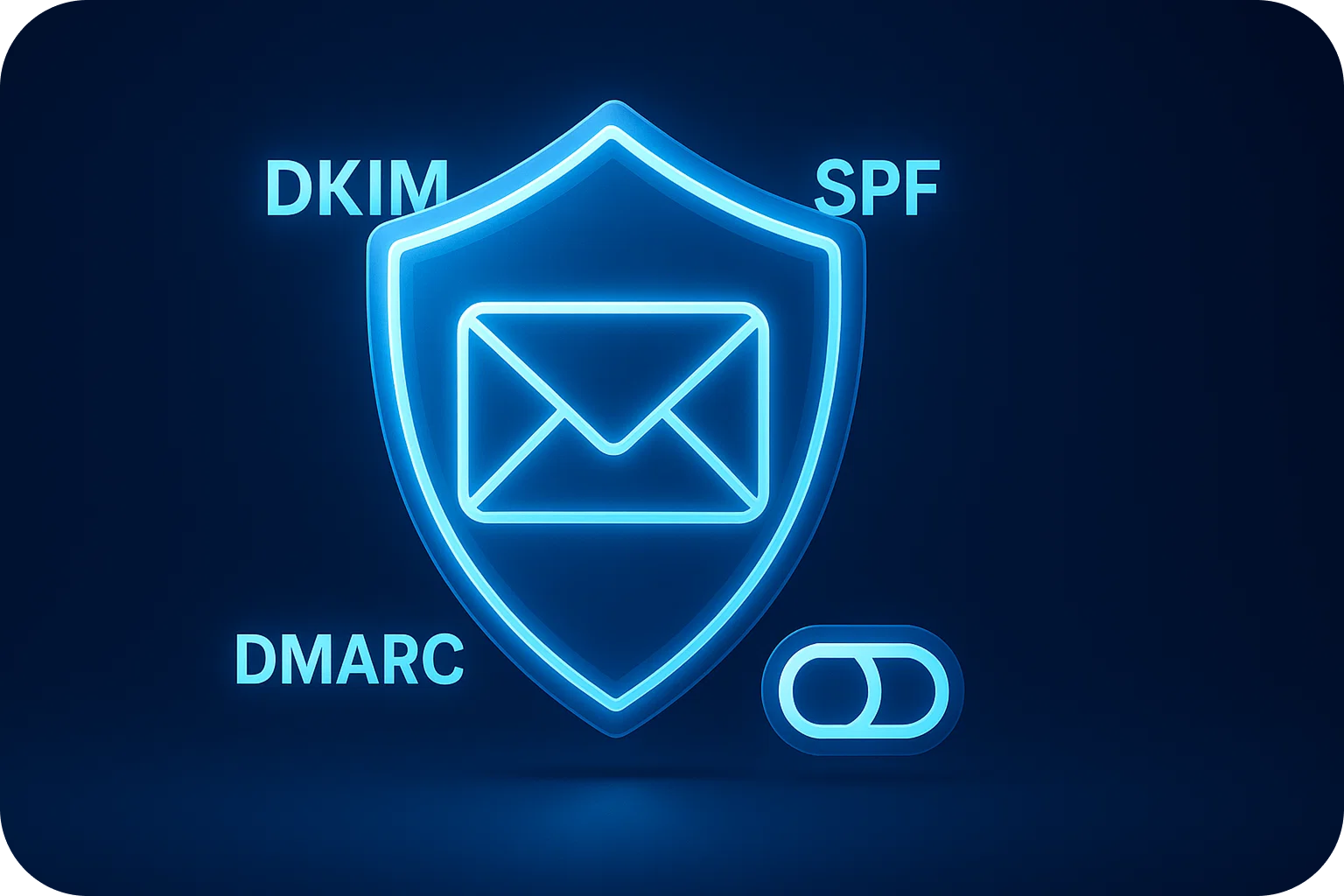The Cold Email Comeback: Reviving Stale Campaigns With Fresh Infrastructure

Your cold email campaigns were crushing it three months ago. Open rates were strong, replies were flowing in, and your sales pipeline was healthy. Then something changed. Your emails started landing in spam folders, engagement dropped, and suddenly your once-reliable outreach channel became a black hole for leads.
Sound familiar? You're not alone. Even the most carefully managed cold email campaigns can lose steam over time, but the good news is that with the right infrastructure refresh strategy, you can stage a complete comeback.
Why Cold Email Campaigns Go Stale
Before diving into solutions, it's essential to understand why campaigns lose effectiveness. The problem rarely stems from your messaging alone; it's usually rooted in your email infrastructure and domain reputation.
Domain Reputation Decay
Your domain reputation is like a credit score for email sending. Every campaign you run affects it. High bounce rates, spam complaints, and low engagement gradually erode your sender reputation. Internet Service Providers (ISPs) like Gmail and Outlook track these signals meticulously, and once your reputation drops below a certain threshold, your emails get filtered out automatically.
The challenge is that reputation damage accumulates slowly, making it difficult to pinpoint exactly when things went wrong. By the time you notice deliverability issues, your domain reputation may already be significantly compromised.
Inbox Fatigue and Burnout
Sending too many emails from the same inbox creates another problem: inbox burnout. Even with a perfect technical setup, overworking individual email accounts triggers red flags for email providers. The recommended limit is 20 emails per inbox per day, but many teams push well beyond this, accelerating reputation decline.
Outdated Warm-Up Strategies
Many teams skip proper warm-up protocols or rush through them to start sending faster. Others warm up their inboxes initially but fail to maintain ongoing engagement patterns that keep accounts healthy. This inconsistency signals to ISPs that your sending patterns are suspicious, damaging inbox placement rates over time.
The Infrastructure Refresh Strategy
Reviving a stale cold email campaign requires more than tweaking subject lines or adjusting send times. You need a systematic approach to rebuilding your email infrastructure from the ground up.
Step 1: Audit Your Current Setup
Start with a comprehensive audit of your existing infrastructure. Check your domain reputation using tools like Google Postmaster, Microsoft SNDS, or dedicated reputation monitoring services. Review your DNS records, SPF, DKIM, and DMARC to ensure they're properly configured.
Analyze your recent campaign metrics closely. Look for patterns in bounce rates, spam complaints, and engagement drops. Identify which domains or inboxes are most compromised. This data will guide your refresh strategy and help you prioritize which elements need immediate attention.
Step 2: Implement Domain Rotation
One of the most effective cold email best practices for campaign revival is implementing a proper domain rotation strategy. Instead of sending all your outreach from a single domain, distribute your volume across multiple domains.
The ideal setup uses 3-5 email accounts per domain, with each account sending no more than 20 emails daily. This approach protects your primary domain while spreading risk across your infrastructure. If one domain's reputation suffers, your entire operation doesn't collapse.
When adding new domains, avoid using variations of your main brand domain. Instead, use related but distinct domains that still feel legitimate to recipients. For example, if your main domain is "techsales.com," you might use "techsalesgroup.com" or "techsalespartners.com" for outreach.
Step 3: Execute Proper Warm-Up Protocols
New infrastructure requires patience. Proper email warm-up typically takes 3-4 weeks before you can send at full volume. During this period, gradually increase sending volume while maintaining high engagement rates.
Start with 5-10 emails per day per inbox in week one, then increase by 5-10 emails weekly until you reach your target volume. The key is consistency; maintain regular sending patterns without sudden spikes that trigger spam filters.
Warm-up isn't just about volume ramping. You need genuine engagement signals. Use automated warm-up tools that exchange emails with other warm-up accounts, creating natural conversation patterns. These tools simulate real engagement, building positive reputation signals with ISPs.
Step 4: Optimize Technical Configuration
Technical setup makes or breaks inbox placement. Even minor DNS misconfigurations can tank your deliverability. Ensure your SPF records include all sending servers, your DKIM signatures are properly implemented, and your DMARC policy is set to at least "p=quarantine."
Beyond basic authentication, implement additional technical optimizations. Set up custom tracking domains instead of using default ones from your email tool. Configure reverse DNS (PTR) records for dedicated IPs. These details signal professionalism to ISPs and improve inbox placement rates.
Step 5: Rebuild with Quality Over Quantity
When relaunching campaigns with fresh infrastructure, resist the temptation to immediately blast your entire list. Start with your highest-quality segments, prospects who match your ideal customer profile most closely and are most likely to engage.
High engagement rates on your initial sends build positive reputation signals quickly. As your new infrastructure proves itself with strong metrics, gradually expand to broader segments. This strategic approach accelerates reputation building while minimizing risk.
Advanced Infrastructure Strategies
Shared IP vs. Dedicated IP Considerations
For most businesses, shared IP infrastructure provides the best balance of cost and performance. Shared IPs benefit from collective reputation, meaning you're not starting from zero. However, high-volume senders (50,000+ emails monthly) should consider dedicated IPs for greater control over reputation management.
Dedicated IPs require more sophisticated management but offer complete isolation from other senders. If you're scaling cold outreach significantly, the investment in dedicated infrastructure pays dividends through improved deliverability and greater sending flexibility.
Provider Diversification
Don't put all your eggs in one basket. Diversify across email providers, use a mix of Google Workspace, Microsoft 365, and other enterprise providers. Different ISPs view different providers with varying levels of trust, and diversification protects against provider-specific deliverability issues.
This strategy also provides operational resilience. If one provider experiences technical issues or policy changes, your entire outreach operation doesn't grind to a halt.
Monitoring and Maintenance
Infrastructure refresh isn't a one-time fix; it requires ongoing monitoring and maintenance. Implement daily checks of key deliverability metrics: bounce rates, spam complaint rates, and inbox placement percentages.
Set up alerts for sudden metric changes that might indicate emerging problems. The faster you catch deliverability issues, the easier they are to fix. Weekly reviews of domain reputation scores help you stay ahead of potential problems before they impact campaign performance.
Measuring Your Comeback Success
Track specific metrics to gauge your infrastructure refresh effectiveness. Inbox placement rate is your north star aim for 96-98% placement in primary inboxes. Monitor this across different providers (Gmail, Outlook) since performance can vary.
Beyond deliverability metrics, watch engagement signals closely. Open rates should improve within 2-3 weeks of implementing fresh infrastructure. Reply rates typically take longer to recover, expect 4-6 weeks before seeing significant improvement.
Compare current performance against your baseline from before the campaign went stale. Full recovery means matching or exceeding those original metrics. If you're not seeing improvement after 6 weeks, revisit your infrastructure setup and warm-up protocols.
Preventing Future Decline
Once you've successfully revived your campaigns, implement preventive measures to avoid repeating the cycle. Establish clear sending guidelines for your team: maximum daily volumes per inbox, required warm-up periods for new accounts, and regular infrastructure rotation schedules.
Build infrastructure refresh into your quarterly planning. Proactively add new domains and inboxes before you need them, maintaining a healthy reserve of warmed-up infrastructure. This forward-thinking approach ensures you're never caught without healthy sending capacity.
Invest in proper infrastructure management tools that automate warm-up, monitor deliverability, and alert you to issues before they become critical. The 10 minutes required for proper implementation pay enormous dividends in sustained campaign performance.
Conclusion
Stale cold email campaigns don't have to mean the end of your outreach channel. With systematic infrastructure refresh, proper domain rotation, disciplined warm-up protocols, technical optimization, and ongoing maintenance, you can stage a complete comeback and build a more resilient outreach operation.
The key is treating email infrastructure as a strategic asset requiring active management, not a set-it-and-forget-it utility. Teams that embrace this mindset consistently achieve 98% deliverability rates and scale their outreach 100x without sacrificing inbox placement.
Your cold email comeback starts with fresh infrastructure. The question isn't whether you can revive underperforming campaigns; it's how quickly you'll implement the strategies that make it happen.
More articles
Get started now




%201.png)





